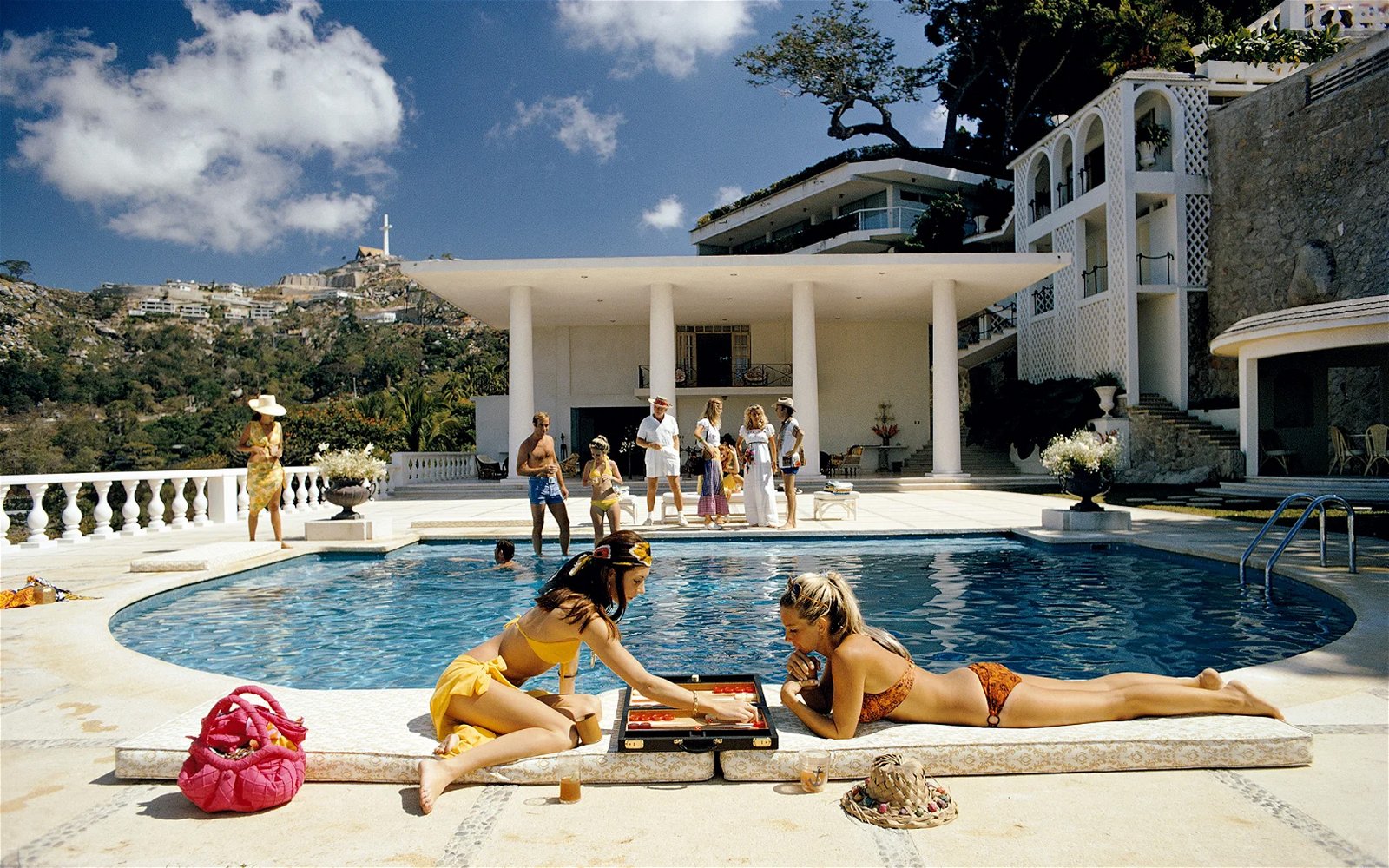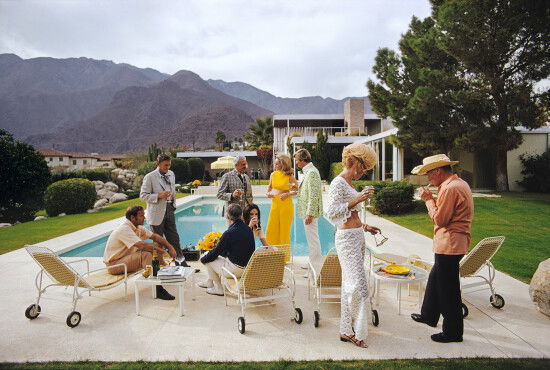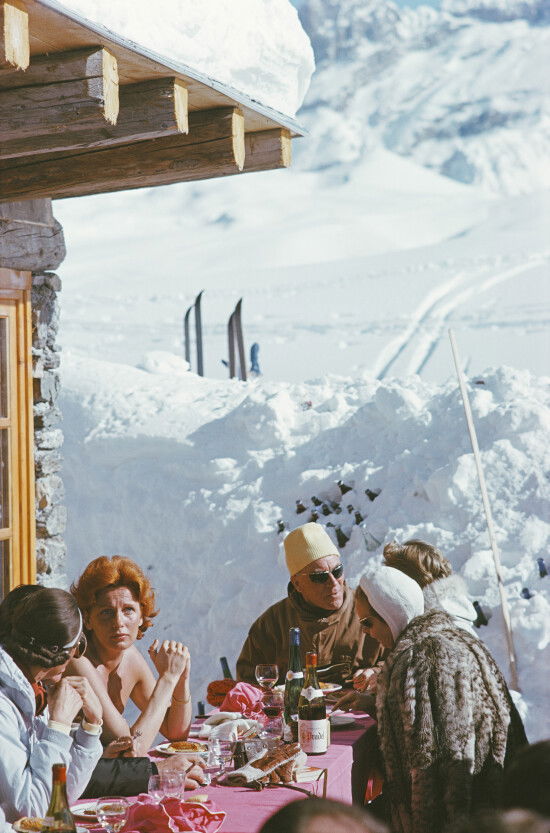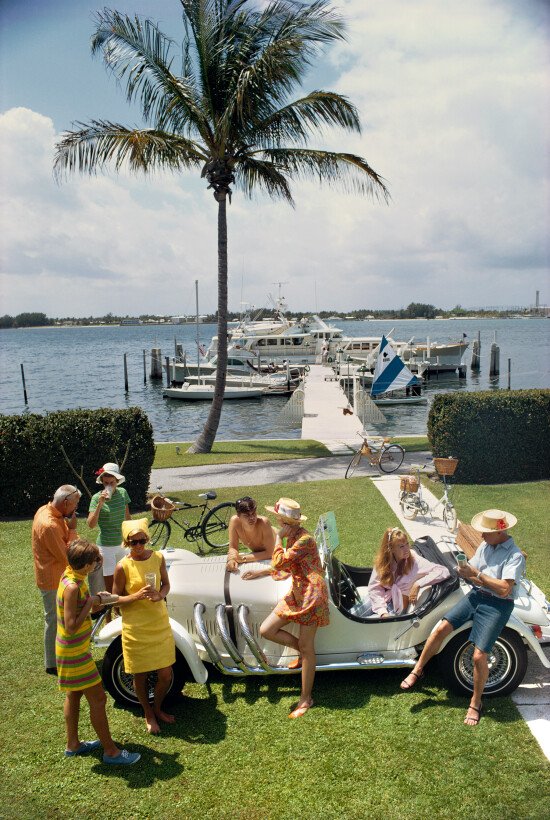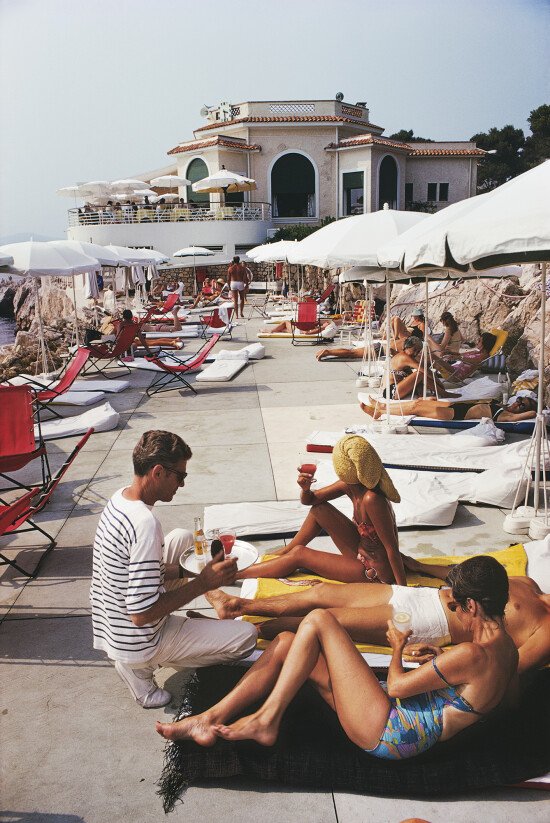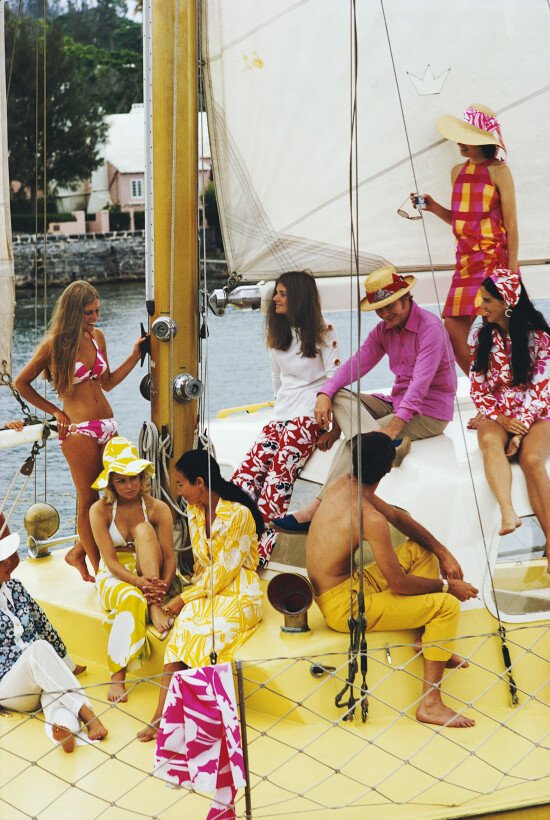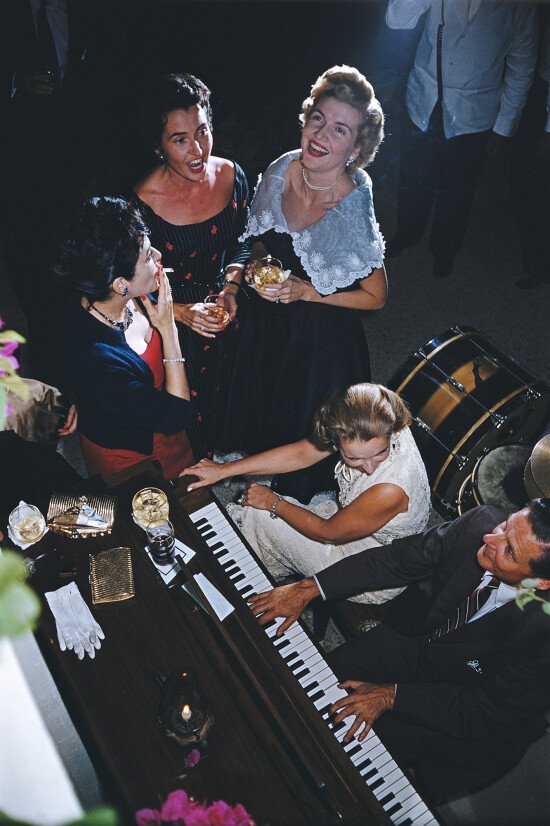Slim Aarons
Style
Style not Fashion
“I don't do fashion. I take photos of people in their own clothes and that becomes fashion."
When given the chance, Slim Aarons would be the first to proudly and enthusiastically admit that he was not a fashion photographer. His own words were, "I don't do fashion. I take photos of people in their own clothes and that becomes fashion." It's a simple premise: These are the Beautiful People, this is how they dress, and soon, this is how you will dress, too.
- STYLE -
Evolution of Fashion Photography
Fashion photography first appeared on the printed page in the early twentieth century in magazines such as Art et Décoration and Vogue. Baron de Meyer and Edward Steichen, two pioneers of the genre, overcame photography's technical limitations by introducing dramatic lighting and custom-built sets to infuse pictures with elements of distinction and chic. Their photographs showed the latest fashions, naturally, but also incorporated avant-garde art and design.
Society women, already the main subject and readers of the fashion press, were among the earliest sitters,' often wearing garments from their own wardrobe. Fashion pictures evolved aesthetically throughout the first half of the twentieth century.
At their core, the best fashion pictures are a conspiracy involving the photographer — who envisions a role, character, or situation — and the sitter, who plays along (or not). In the early days of his career, Slim shot straight fashion pictures for magazines and catalogs, generally outdoors, using both professional models and civilians, examples of which are being revealed to the public for the first time in this volume. Ultimately, Slim took his work in different direction. Instead, he went straight to the source, documenting the real-life grandeur and luxury other photographers turned to for inspiration. Slim was innately curious about the people of privilege who populated this private world: how they lived, what they ate, where they vacationed, and what they wore.
Houston oil man Baron Enrico Di Portanova in Monte Carlo. He carries cigars in specially adapted pockets of his jacket which was designed specially for him and his cigars by Angelo's in Rome. The cigars are of course Monte Cristos.
- STYLE -
More Than Just Clothes
Garments are the ultimate public signifiers — the designer Miuccia Prada has described them as instant language — but style is more than just clothes. Style is comportment and carriage. It is the objects that surround us and how they are arranged, how one entertains and passes time, and both how and where we travel. It is not what we wear, but how we wear it. Slim may not have formally studied fashion, but he innately understood style; he had it himself. Even today, more than twenty years since he stopped making pictures, his name is regularly invoked by writers and journalists as shorthand for the Good Life: like straight out of a Slim Aarons photo... It's easy to see why. Slim's photographs are portals to another place where the sun is shining, the grass resplendent, the pool temperate, and money. Captured privileged spaces and the sort of environments people dream of inhabiting, but the scenes, the people, the places-are idealized.
Henry B. Cabot Jr. (standing, centre) with his son Henry Bromfield Cabot III and their host Barclay (Buzzy) H Warburton III (in striped shirt) aboard the brigantine 'Black Pearl', circa 1959. They are sailing off North Shore, Boston, around Manchester and Marblehead harbors, Essex County, Massachusetts.
